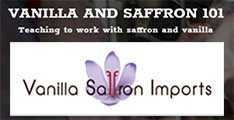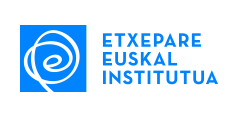Matthew Westwood/Sydney. It was an hour of harmless fun and, as street spectaculars go, of modest scale. In Perth, where Holloway was previously festival director, he brought Royal de Luxe’sThe Giants to the city and crowds in the region of 1.4 million people. Deabru Beltzak’s Les Tambours de Feu involved just seven performers and, on Thursday evening, a turnout of about 1000.
Holloway is not keen on comparing the scale of his Melbourne and Perth ventures, but some observations are instructive because the Melbourne Festival under this new artistic director may evolve differently to some other capital-city arts festivals.
The Melbourne Festival is the third to open in what has been a renewal of festival directors. David Berthold in Brisbane has recently closed his second festival, and Wendy Martin presented her debut in Perth in February. Next year sees Wesley Enoch’s inaugural Sydney Festival, and co-directors Neil Armfield and Rachel Healy will unveil their first program in Adelaide.
Holloway, a former choirboy from Sheffield in northern England, is the only foreigner now heading one of Australia’s main arts festivals. As one interstate arts administrator mentioned last week, the return to a largely Australian cohort of festival directors may lead to greater commissioning of new work from local arts companies — especially small to medium companies — given the directors’ experience and knowledge of the sector. They will be aided by the federal government’s funding pool, the Major Festivals Initiative, increased last year to $1.5 million annually.
Holloway’s tenure is unusual for another reason, because he has been appointed for an ongoing, unspecified term. (His predecessor, Josephine Ridge, now heading the Luminato festival in Toronto, served for three years.) Where most festivals have a periodic turnover of directors with an accompanying change of tone and program priorities, Melbourne’s has the potential for a sustained period of development under one artistic leader. Holloway says he is already having discussions about a potential project involving local and international artists for 2022.
The festival’s opening weekend showed early signs of change under Holloway’s direction. He has maintained the Tanderrum welcome-to-country ceremony that was introduced by Ridge, and with Les Tambours de Feu has staged the sort of street theatre that was a hallmark of his Perth years.
But the Foxtel Festival Hub is no longer (a smaller music program and after-show club has shifted to The Toff in Town), and the classical music offering is much smaller than previously.
Holloway has calibrated the scale of events so the visitor can make a journey from intimate participation in The Echo of the Shadow to being swept along with the crowd in Les Tambours de Feu; or from shared experiences in the theatre to interactive exhibitions.
I particularly liked the multi-venue exhibition about three radical creative talents from the early 20th century, composer Percy Grainger and architect couple Walter Burley Griffin and Marion Mahony Griffin. The exhibition at the University of Melbourne organised by Jonathan Mills includes working re-creations of some of Grainger’s “free music” machines — such as the Kangaroo Pouch Machine, which produces sliding electronic tones — and ingenious modern interpretations of the composer’s ideas about instruments.
An anticipated premiere in the festival’s opening weekend was Lady Eats Apple from Geelong’s Back to Back Theatre. The piece is startling in its juxtaposition of grand gestures — including a stunning transformation of the inflatable stage inside Hamer Hall — and exquisite, intimate moments. The hour-long piece is devised in three acts that broadly address creation myths and human agency. The wordless middle act, with an evocative soundscape by Chris Abrahams, seems less developed than the other two.
Two visiting national theatres, from Scotland and China, each brought to Melbourne a very funny comedy. Festival audiences previously have seen the acclaimed National Theatre of Scotland in Black Watch, about Scottish soldiers in Iraq, and the three-part historical epic The James Plays.
This year’s Our Ladies of Perpetual Succour is about six convent girls on a drink and drugs rampage in Edinburgh. The coming-of-age story is touching, profane and finally optimistic, with terrific performances and songs backed by a three-piece band.
The stars of National Theatre of China’s Two Dogs, Liu Xiaoye and Han Pengyi, are hugely charismatic performers. Director Meng Jinghui sets the scene of two country dogs, Wang Cai (“Wealthy”) and Lai Fu (“Lucky”), who head to the big smoke and find that the city is a tough and dangerous place. The actors improvise around the script and I didn’t understand a word (the subtitles can’t keep track of the extemporised dialogue). But it was a pleasure to see an audience of mostly young Chinese at the Malthouse, loving every minute of it. Surely this is what an arts festival must do: present work that will attract a diverse audience and expand the experience of long-time festivalgoers.
On a more intimate scale, The Echo of the Shadow from Teatro de los Sentidos — Barcelona’s Theatre of the Senses, which Holloway had also invited to his inaugural 2012 Perth Festival — gives the visitor a personal journey through sensory environments and one-on-one interactions with actors. The scenarios have the atmosphere of a fairytale — the hour-long work is based on a story by Hans Christian Andersen — and leave the visitor with sensations that delight and unsettle.
I did not see The Money from British company Kaleider: another work that involves the theatregoer in a real-time interaction, this time involving a decision about a sum of cash.
The festival runs until October 23 and the coming weeks bring performances that also involve shifts of scale and experiment with form. Canadian theatre magus Robert Lepage returns with his autobiographical, perception-shifting work 887, Berlin’s Gob Squad does War and Peace and, in a surprising festival inclusion, Canada’s Le Patin Libre presents Vertical Influences on ice skates.
Holloway’s Melbourne budget of about $5m is less than half the programming purse he had to spend in Perth. He insists that a festival is about more than numbers, whether dollars or attendances, but he is clearly ambitious for growth. As his ideas take shape for future Melbourne Festivals, he will also be looking for the resources to realise them.
If Holloway is here for the long haul, it will be fascinating to see how the Melbourne Festival develops.
Matthew Westwood travelled to Melbourne as a guest of the Melbourne Festival
@matthewwestwood



 Lagun bati bidali
Lagun bati bidali Komentarioa gehitu
Komentarioa gehitu








